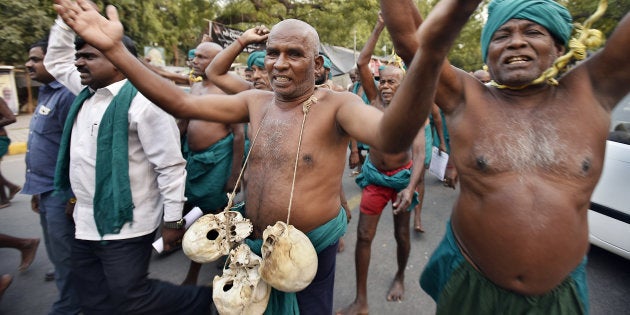For around three years in a row now, the National Crime Record Bureau (NCRB) has not disclosed the Accidental Death and Suicides in India (ADSI) report. Last published in 2015, the ADSI, which is an important source for data on farmer suicides in India, would have been a true indicator of development in rural India.
According to a report by the World Health Organisation (WHO), India currently has the highest suicide rate in South-East Asia. In the last ADSI report, it was reported that farmers’ suicides constitute 11.2% of all suicides in India. However, since 2014, there was an apparent dip in farmer’s suicide. For instance, in 2014 the share of farmers’ suicides in India dropped to 4.3 % as compared to 9% in 2013. This can be attributed to a change in the data-collection process of the NCRB, which started classifying these deaths of ‘tenant farmers’ under ‘agricultural workers’, instead of ‘farmer suicides’.
However, agricultural workers’ suicide have gone up in many states. This bifurcation of deaths might mislead the reader to believe that farmers’ suicides are reducing when actually, these deaths are speaking for themselves anyway about the agrarian crisis that India is going through.
The 2011 Census claimed that the ‘farm dropout’ rate is 2,040 every 24 hours. This means every day around 2,000 farmers give up agriculture as a livelihood and join other occupations. There are many profitable and even noble professions in the world for sure, but there is none other upon which all other occupations are dependent on more than a farmer’s. A person might be able to do away with the need of a mason, trader, driver, chartered accountant, teacher, or even a doctor for one day–but they certainly need a farmer three times a day so-as-to eat three meals a day.
A report by India Today TV says that that the Ministry of Home Affairs has been withholding the report deliberately even when the report for 2016 was submitted to the Ministry in April 2018. The news report goes on to state that “As per an affidavit submitted by the Union of India to the Supreme Court, provisional data on the farmers’ suicides was released which noted that 12,602 farmers had committed suicide in 2015 of which the highest was from Maharashtra.”
However, it looks like the BJP completely ignored that in the manifesto for the Maharashtra Assembly elections, and chose to focus the debates on the scrapping of Article 370 and granting Bharat Ratna to Hindu Mahasabha ideologue Vinayak Damodar Savarkar. But come to the next elections, strategic places farmers’ issues will be milked by politicians just like ganna (sugarcane) farmers in Uttar Pradesh were addressed by Prime Minister Modi just one day before elections in Kairana in 2018.

The BJP government might have won the 17th General Elections in India, but it still needs to pass the farmers’ test. Of late, the country has seen protests from the farming community growing in both frequency and intensity, demanding better conditions for farmers. Farmers have protested locally and at the centre with drastic methods to draw attention to their plight.
Delhi: Latest #visuals from near Jantar Mantar on the second day of 2-day protest by farmers from all across the nation, who are asking for debt relief, better MSP for crops, among other demands pic.twitter.com/SIccqj6DIo
— ANI (@ANI) November 30, 2018
In the first tenure of the BJP government, Prime Minister Modi’s then-Cabinet Minister for Agriculture Radha Mohan Singh had dismissed these protests as ‘gimmicks‘ for media attention, while blaming the opposition Congress party for the farm distress, and also attributed dowry, impotency, and “failed love affairs” of farmers as reasons behind the suicides.
Today the spate of farmers’ suicide in India and mostly the failure of the state to publish its records only establish the fact more strongly that it’s not about jilted lovers or an opposition party which has been long-removed from power. It exposes the grand failure of the state to pay due attention to 60% of the population who are directly or indirectly engaged in agriculture.
The remedies still lie squarely in the executive’s domain, be it Minimum Support Price (MSP), compensation for crop failure or subsidised agricultural inputs. The landmark initiatives of Swaminathan Committee’s 2004 Report (SCR) need to be put into service as advised, and the fifteen year-long battle for its faithful implementation needs to come to a rest.
The Vajpayee government’s loss in the 2004 elections should be a reminder that angry farmers are still an indispensable voting bloc in India. While pro-framer promises continue to be part of political tall-talk, on the ground, they need to have more substance. The core issues of comprehensive cost, crop and credit system need to be addressed together to make sure that the farmers’ issue finds a panoramic solution.
Note: The author is part of the current batch of the Writer’s Training Program.
